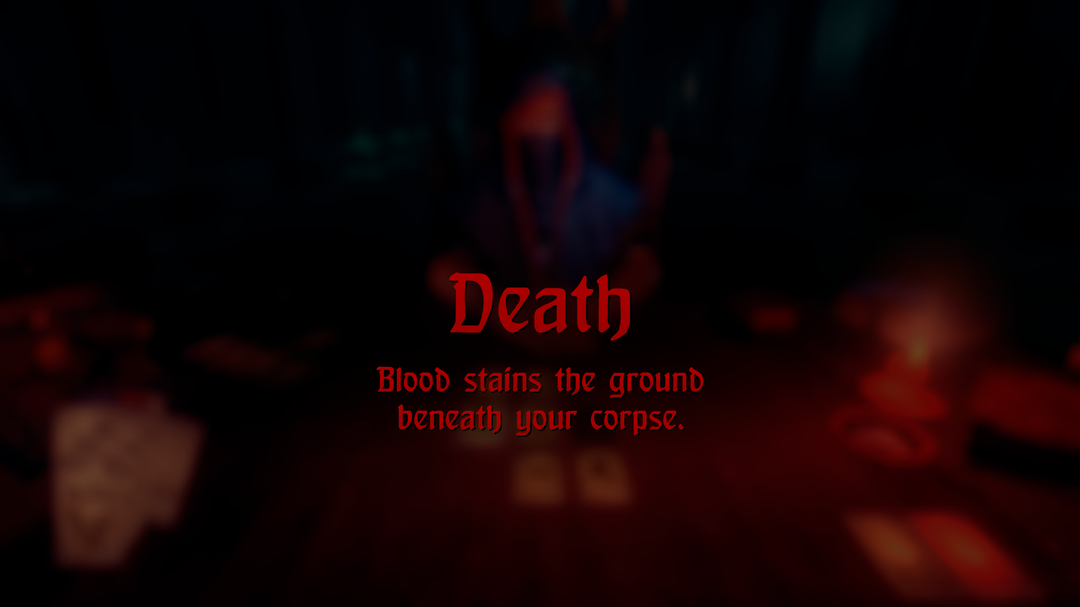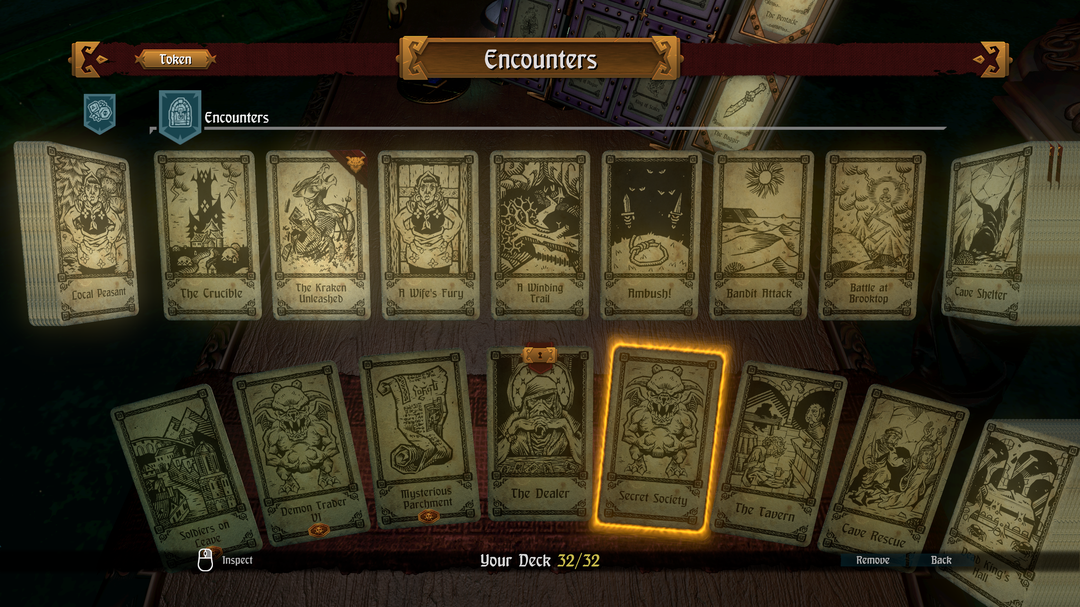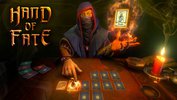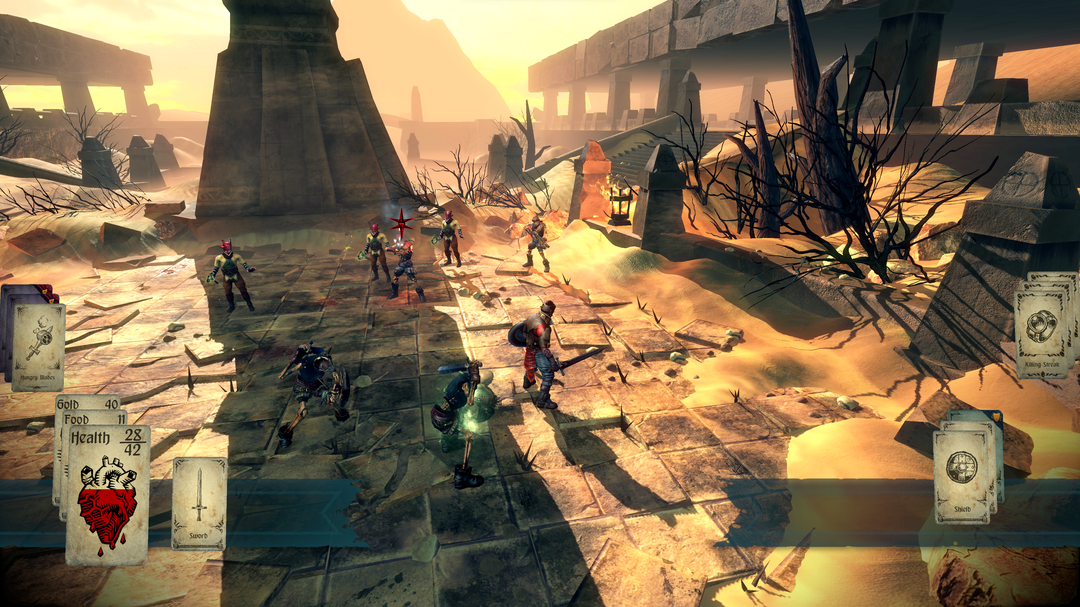As we hosted Finish The Damn Game Month in September, I looked through my Steam library and agonized over the many unfinished and never-played games within, trying to find hidden gems in my collection. Eventually, I saw Hand of Fate and remembered that I was only a few levels away from beating it years ago. In my hubris, I chose that to play, thinking it wouldn’t be so hard to finish in time.
So I started playing before quickly remembering something.
I. Am. BAD. At. Roguelikes.

Don't judge me, The Dealer does that enough!
Trying to get through the first of the last few levels was an exercise in patience and fury–a bad combination–as I struggled to even get to the boss of the level. And despite my best efforts I have to admit…I did not finish the damn game.
But while I was playing, I realized that it didn’t matter how much I was dying or how immense the challenge felt. I just had to try one more time. There were many “just one more times", and each time, I could actually feel myself getting better, realizing what equipment worked for me, experimenting and testing and learning. And I was having fun.
I was still bad, but I was less bad, even improving. And I couldn’t figure out why. So I tried playing another roguelike, Slay the Spire, and I found I was doing much better than I have previously. Hand of Fate was improving my approach to roguelikes. So naturally I had to dig deeper into (read: actually pay attention to) the gameplay to figure out how the game teaches you to play it.
I’m happy to say that after my digging, I can safely recommend Hand of Fate as a great entry point into roguelikes. It effectively teaches you strategy, inventory selection, and combat so you can forge your own path to victory.
It’s All In The Cards
To start, Hand of Fate does a good job teaching you skill while also leaving you at the whim of lady luck. Sure, a standard deck of fifty two playing cards can be shuffled into 80,658 vigintillion combinations, but no matter what, you always know that you’ll find four suits of thirteen cards in a fair deck.
I bring this up because of how encounters work. As you work through each level, a deck of cards is laid out to form the path you explore, with a second deck filled with inventory items you can collect kept nearby. You can run into traps and monsters and treasure every time you move along the board... but you get to make the deck of cards. Between story runs, you get to pull cards from your collection to make up what gets shuffled into the next game, with stranger and stronger cards slowly unlocking as you conquer each level.

You will get a lot of options to chose from and it can be overwhelming! If you have trouble choosing, the game even recommends some cards to help auto-fill decks.
That ability to choose your encounters is part of what makes the game so approachable. Floors are randomized, so you don’t exactly know what you’ll run into, but you know what you could run into. Similarly, because you can customize your inventory deck, you can choose the weapons, armor, and buffs that give you the best advantages with the encounters you chose. Combine this with perfect information of the pool of enemies, buffs, and debuffs you’ll encounter and you have a fantastic start to building winning decks.
Of course, you start with a shallow pool of cards to pull from at first, with more cards unlocking as you complete challenges. It offers some comfort without pushing you too hard at first, and gives you that roguelike rush of unlocking more options. You’ll eventually need to experiment with newer cards as your deck limit rises, but if something works for you, there’s no need to replace it, so you can always have some 'old reliable' cards you know you can always take advantage of on every run.
 Hand of Fate
Hand of Fate
Developer: Defiant Development
Platforms: PC
Price: $19.99
Release Date: Feb. 17, 2015
Now sometimes you hit a bad run and the cards just don’t pan out for you; after all, every level is randomized. But there’s just enough control over that randomness to let players really explore their possibilities and get comfortable with strategizing and decision making.
Slaying Like the Queen of Swords
Combat is a core part of many roguelikes, and Hand of Fate is no exception. It will be the cause of many, many…many deaths. However, I realized yet again that this is a great game to prepare for what other roguelikes have in store; learning attack patterns, anticipating the next move, and knowing when the act.
You start out with the ability to attack and dodge, eventually gaining the ability to counter attack, push enemies, and even deflect missile attacks once you gain a shield. Enemies attacking from melee or at a distance will have a green or red marker will appear over their heads when they attack: green attacks can be countered, while red attacks cannot and must be dodged. You may get weapon abilities or spells that you can use in combat at some point as well, and some equipment has passive abilities that affect you or your opponents.

Enemies with guns can never be countered, so don’t even try. It hurts. A lot.
That’s it! It never gets more complicated than that. Insert your “5 Ds of Dodgeball” jokes here.
You’ll notice there isn’t really a “block” option there. Hand of Fate utilizes a more dynamic combat system, so you’re never static while you fight. Every move you make is a deliberate action, so there’s no turtling behind a shield. Dodges don’t necessarily have invincibility windows, so timing is key to get out of the way. Enemies have generous attack animations, so you can clearly see how the enemy moves when you see the green or red cue. By linking attacks to those cues, you’re slowly trained to recognize attack animations and plan your next move accordingly. That way if, completely hypothetically, you hit an encounter that takes away your shield and lose your counterattacks and the green cues, you can still recognize when that kind of attack is coming and dodge accordingly.

On top of all the other options and choices, you are given the option to try out different starting fates. Some let you conserve food while others allow for more risky plays. Trying out a variety of playstyles is part of the fun in a roguelike, and Hand of Fate does not disappoint here either!
All in all, the combat of Hand of Fate is very fair to newer players, where winning feels earned and you know it’s your fault when you get hurt. Sure, you can scream a little as your latest run ends horribly surrounding by riflemen, but deep down you know that you made some poor choices to get to that point to begin with.
All Hands on Deck
I failed to finish Hand of Fate this month, but I had fun not only playing it, but studying the game to see how well it introduces new players to the roguelike genre. The amount of control and choice given helps build your understanding and strategizing in the game, while combat and fates ease you into the fray while still providing room to grow.
I want to gush more about the care that was put into this game, but some things need to be experienced firsthand to appreciate them. Please give this game a shot if you haven’t yet, or if like me you haven’t finished it yet, hop back in and try again! The Dealer is always waiting.
Now if you’ll excuse me, I’m going to try to finish one more run.
Just one more run.